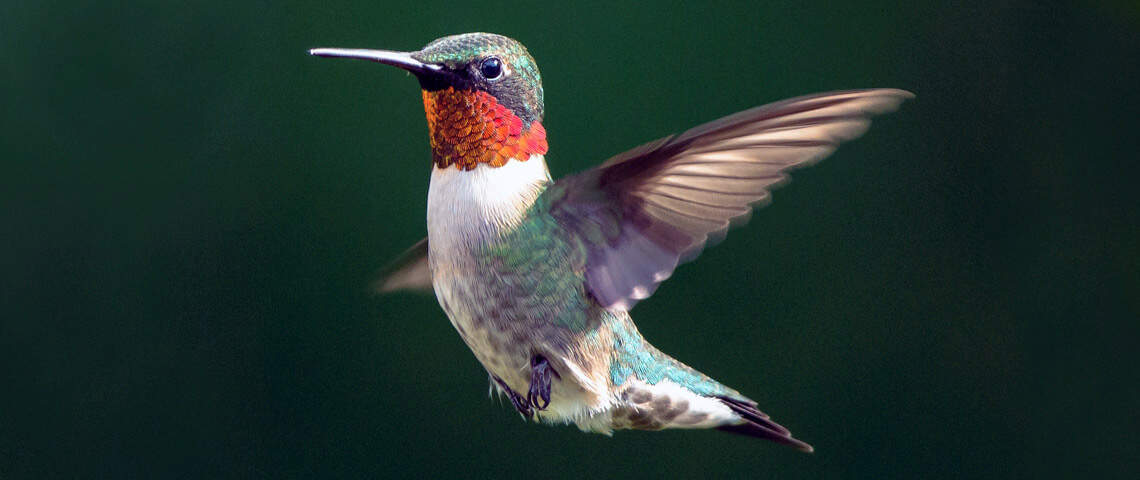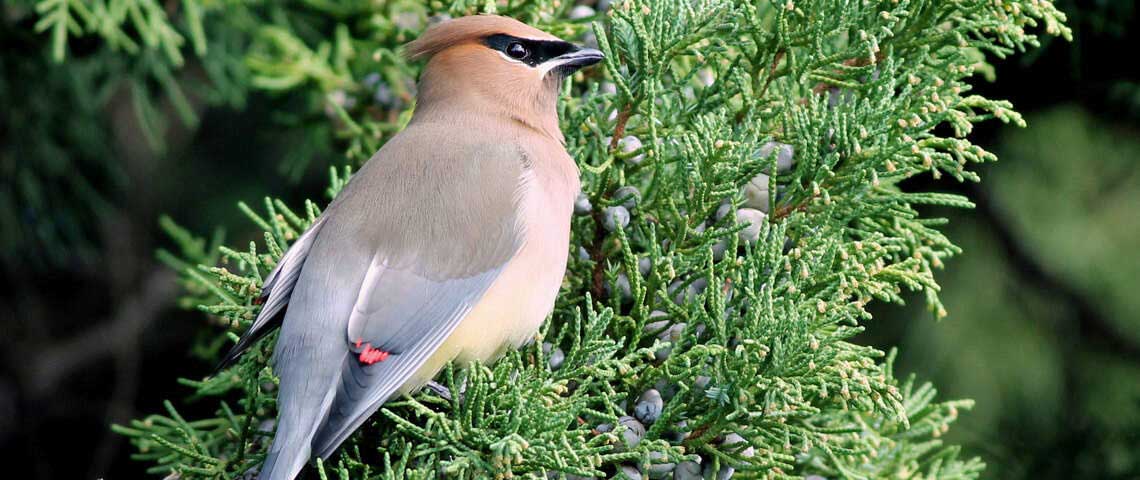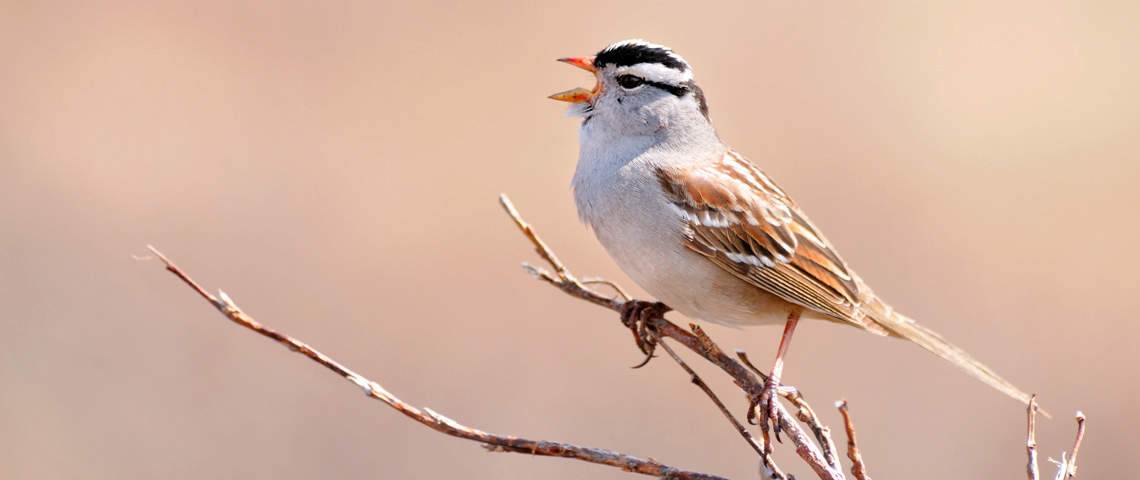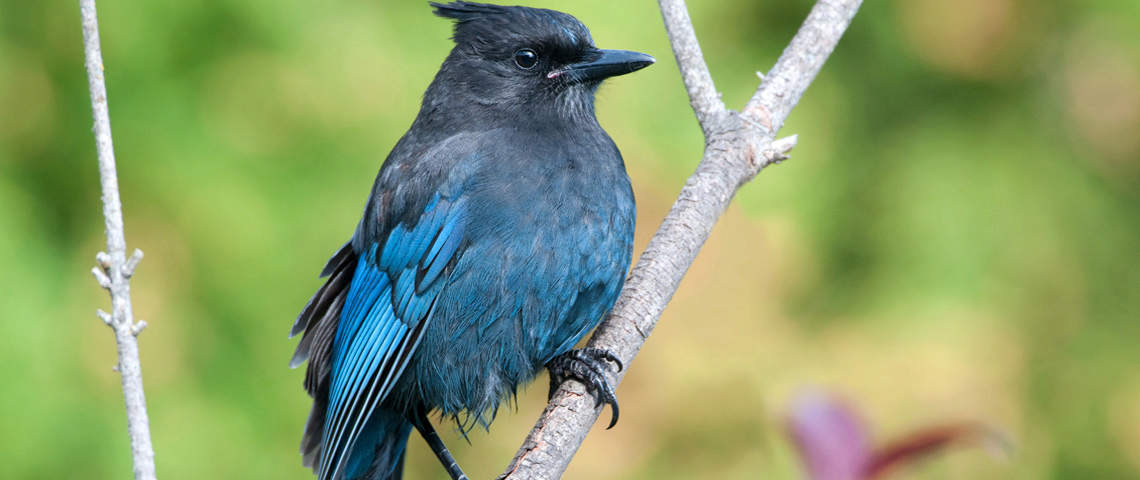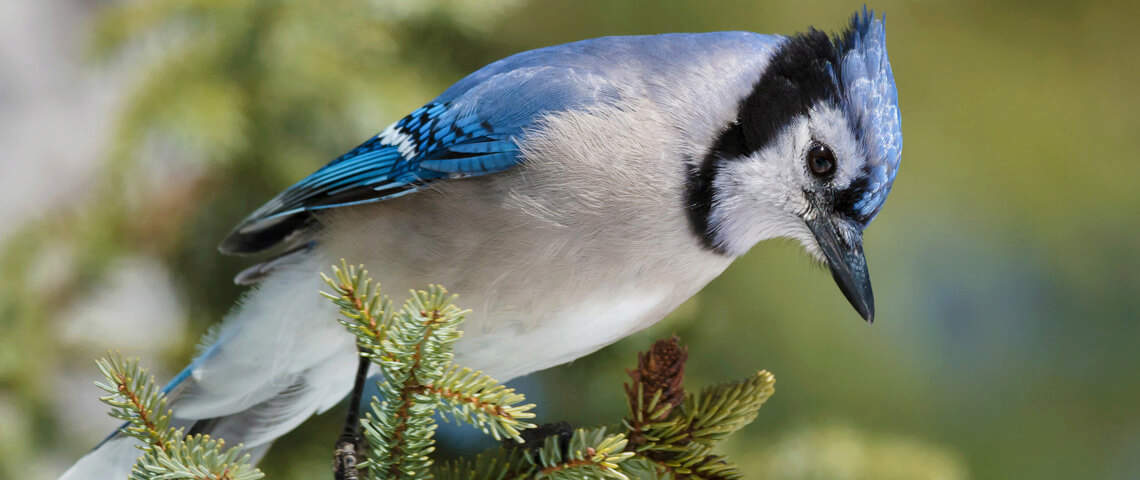Featured Birds: Hummingbirds
Hummingbirds are a family of birds—the smallest on the planet. People love jewel-like hummingbirds, but these tiny dynamos are exceptionally feisty and fierce. Some weigh just an eighth or tenth of an ounce (you could mail 8 or 10 with a single postage stamp!), yet dive-bomb Bald Eagles weighing 1600 times as much!
The popularity of hummingbirds comes from their oversized personalities, tiny size, exquisite beauty, and how they visit feeders on our porches and affixed to our windows, allowing us to watch them at close range.
Their most brilliant colors, such as ruby and magenta, are as flashy as gemstones because they are iridescent. There is no ruby or magenta pigment in the natural world. The pigment in the most brilliant feathers is a dull blackish-brown. The feathers show their brilliance when light hits them from a specific direction. This makes them literally flashy—because hummingbirds are so active and inquisitive, they never hold still even when perched, looking every which way, and so as the angle of light changes, their throat color flashes brilliance. This kind of color is called “structural,” because it’s caused by how the cells are arranged in the feathers rather than by an underlying pigment color.

Hummingbird females are almost always larger than the males of their species, and almost always lay two eggs in a clutch. Most hummingbirds use spider silk in the nest, making it stretch as needed, from an incubator for the tiny eggs and a bassinet for the tiny hatchlings to a crib and even a big kid bed for the growing nestlings.
The only hummingbird that breeds in most of the eastern half of North America is the Ruby-throated Hummingbird, which is one of the tiny species, weighing only about one tenth of an ounce—about the weight of a penny. Many species breed in the West. The Rufous Hummingbird, which is considered the feistiest hummingbird on the entire continent, weighs about the same. The even tinier Costa’s Hummingbird of the Southwestern deserts would balance a dime. Anna’s Hummingbird is closer to the weight of a nickel. The largest of our hummingbirds, the Blue-throated and Magnificent Hummingbirds of mountain canyons in the Southwest, weigh slightly more than a quarter.
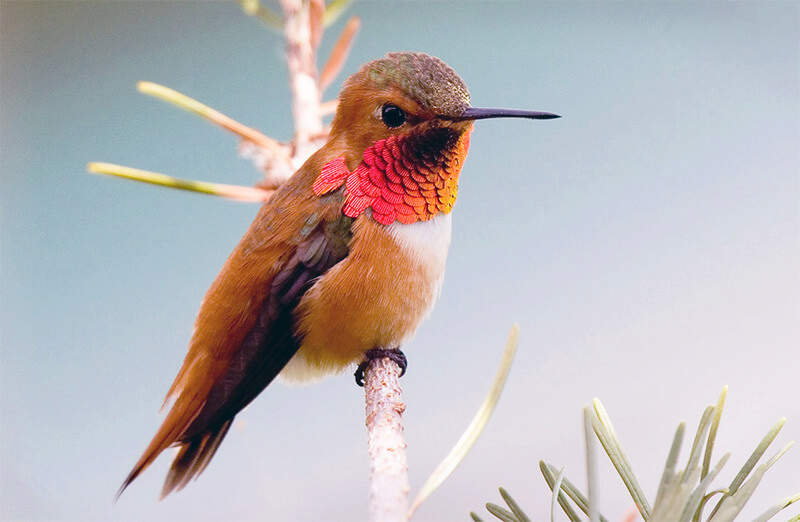
Hummingbirds migrate by day. They stop briefly to feed whenever they notice flowers or feeders, and then move on. But once each spring and fall, many Ruby-throated Hummingbirds are forced to stay awake and fly through the night. These are the hummingbirds that light out over the Gulf of Mexico. In spring they fly from the Yucatan Peninsula in Mexico to the US coast, and reverse the path in fall. To survive the flight, they don’t leave until their body is in top condition with excellent fat content, and leave late in the day. This journey, of at least 500 miles, has to be done non-stop because there is nowhere to land or feed until they reach the opposite shoreline. The flight takes from 18–22 hours depending on the weather.
When hummingbirds aren’t being active, especially during cool weather, they often fall into a deep sleep called torpor. During torpor, they can allow their body temperature to drop so they don’t have to maintain their body’s normal high temperature. They often go into torpor at night, and sometimes during daytime. When they wake up, they usually need to eat right away.

During their spring migration, hummingbirds are easy to attract to bird feeders throughout much of the U.S. and Canada. Doing it right will keep them healthy even as they bring you joy. Hummingbirds are exceptionally active little birds, zipping this way and that, ever watchful for predators and competitors. All that activity requires a high-energy diet. Flower nectar (or the equivalent amount ofPennington ElectroNectar) is high in calories, fueling a lot of activity, but hummingbirds also need a lot of protein, which they get from insects. So a yard with lots of plantings will keep your hummers around for more than a quick meal.
Our hummingbird feeders provide essential carbs, but hummingbirds can rely on natural sources even during the worst of early spring. When hummingbirds return to your area, spend some time looking up at the tiny tips of tree branches. Some trees ooze sap, which not only provides sugar but also attracts the tiny insects hummingbirds depend on. And another source they rely on during migration and into the nesting season is provided by sapsuckers. In the East, the arrival of hummingbirds follows by a couple of weeks the arrival of Yellow-bellied Sapsuckers. The drill holes sapsuckers dig into trees ooze sap. The single most important factor in predicting whether hummingbirds will nest in an area is the presence of sapsuckers.

